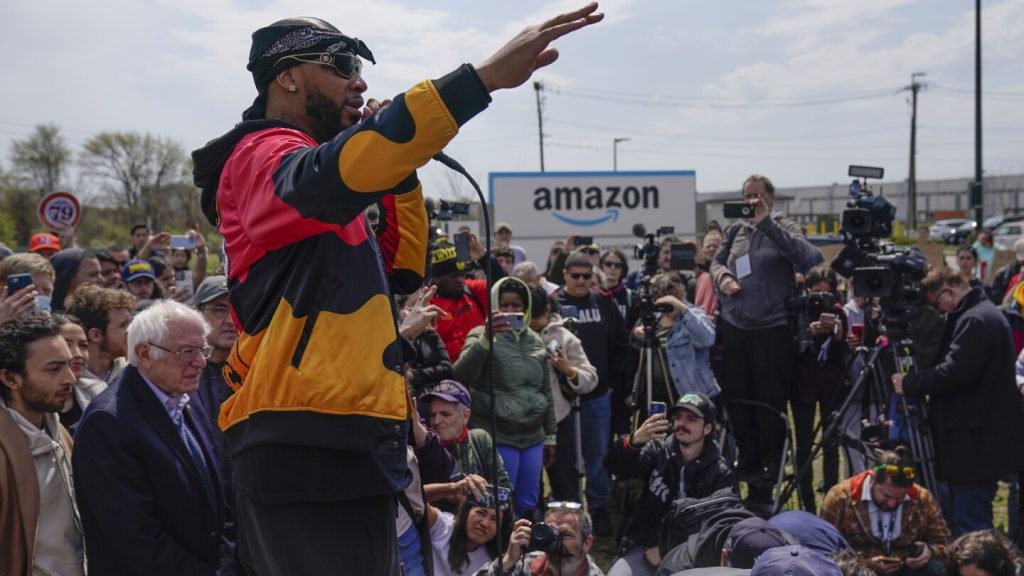The first labor union for Amazon workers in the United States, which achieved a historic victory at a New York City warehouse two years ago, is now facing internal divisions, financial issues, and leadership conflicts. Despite efforts to unionize at several Amazon facilities, the warehouse on Staten Island remains the only site where workers have voted in favor of union representation. Cracks within the Amazon Labor Union have emerged following failed votes at other warehouses, leading to disagreements about the group’s organizing strategy. Some members believe the union’s president, Chris Smalls, focused too much on traveling and giving speeches instead of prioritizing negotiations with Amazon for a contract.
While many of the union’s challenges stem from internal issues, Amazon has also been resistant to engaging in negotiations despite pressure from federal labor regulators. The company has accused the National Labor Relations Board and the ALU of influencing the outcome of the successful unionization vote. Amazon argues that the results do not accurately represent the majority of employees’ desires, even though over 2,600 workers at the JFK8 Fulfillment Center voted in favor of union representation. The lengthy negotiation process allowed under labor laws presents a significant obstacle for the union to reach a collective bargaining agreement with Amazon.
In an attempt to address leadership conflicts, a splinter group called A.L.U. Democratic Reform Caucus filed a lawsuit to force an election for new officers in the union. The union agreed to a court-brokered plan that allowed rank-and-file members to vote on whether to hold an election for new leadership. However, the vote did not go in favor of the current union leaders, leading to ongoing legal disputes and internal power struggles. Court documents revealed that a majority of members voted to have an officer election in June or July, highlighting the internal division within the union.
As the leadership conflicts persist, former leaders of the union, including co-founder Connor Spence and former vice president Michelle Valentin Nieves, have entered the race for new leadership positions. Amazon fired Spence last year for violating company policies that are seen as hindering organizing efforts. Valentin Nieves expressed frustration with the current president, Chris Smalls, for his frequent travels and absence from important meetings, emphasizing the need for strong, local leadership to secure a contract with Amazon. Without effective leadership and strong organizing efforts, workers at Amazon fear losing hope for achieving better working conditions and wages.
Amidst the internal conflicts and legal battles within the union, Amazon continues to spend millions of dollars on anti-union consultants and legal challenges to thwart organizing efforts. The company faced a complaint from the National Labor Relations Board for allegedly interfering with an independent union’s organizing efforts at an air hub in Kentucky. Amazon spokesperson Mary Kate Paradis dismissed the complaint as “without merit” and pledged to continue defending the company’s position. Organizers working towards an internal election in the ALU face challenges in securing a new mailing list and campaigning in non-work areas on Amazon’s property.
Despite the obstacles and divisions within the Amazon Labor Union, workers like Keanu Rivera on Staten Island remain hopeful for improved working conditions through union representation. Rivera, who voted in favor of the union two years ago, acknowledges the challenges posed by Amazon’s resistance to bargaining and internal conflicts within the union. Organizers pushing for change hope that an internal election will reenergize workers and strengthen their resolve to secure a contract with Amazon. The future of the union remains uncertain, but the determination of workers to fight for their rights and fair treatment is evident.


